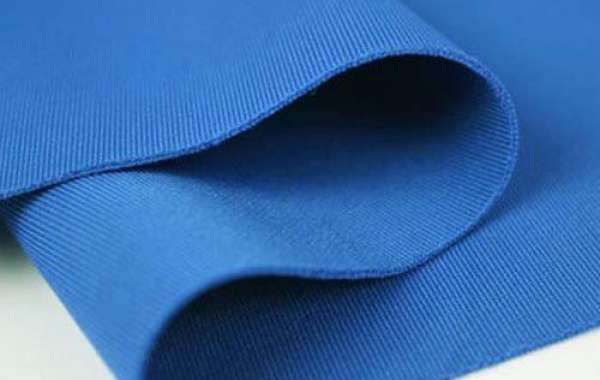When it comes to performance fabrics, one material consistently stands out for its unique combination of comfort and durability: spandex. A fabric known for its elasticity, it has found a significant place in activewear, performance clothing, and even medical garments. Athletes, fitness enthusiasts, and even everyday wearers benefit from its superior qualities, whether it's in leggings, sports bras, swimwear, or compression garments. But what exactly makes it so essential in these types of clothing? This blog delves into how this fabric enhances both comfort and durability in performance wear.
1. Unmatched Stretch and Flexibility
One of the defining characteristics of spandex is its incredible stretch. It can stretch up to five times its original length without losing shape, making it an ideal choice for any activity that requires a full range of motion, such as yoga, running, or weightlifting. Whether you're sprinting, bending, or twisting, this fabric allows garments to move seamlessly with your body, giving you the freedom to perform at your best without feeling restricted.
The elasticity of this fabric also means that garments made from it will maintain their shape even after repeated stretching. For example, leggings and body-hugging athletic gear won't sag or lose their fit, which is a common problem with other fabrics. This enduring stretch helps maintain a sleek and flattering silhouette, ensuring comfort without sacrificing style or performance.
2. Breathability and Moisture-Wicking Properties
Comfort in performance fabrics goes beyond just fit; breathability is essential, especially for those who engage in intense physical activities. When blended with materials like polyester or nylon, this fabric enhances the garment’s moisture-wicking capabilities. Moisture-wicking fabrics pull sweat away from the body and promote quick evaporation, keeping the wearer dry and cool during rigorous workouts.
By helping maintain a dry and comfortable environment for the skin, it also reduces the chances of chafing and irritation, common problems faced during long hours of exercise. Whether you're running, cycling, or practicing hot yoga, this fabric ensures that your skin stays cool, dry, and comfortable throughout your workout.
3. Comfortable and Form-Fitting
Another reason this fabric is favored for activewear and performance clothing is its form-fitting nature. It has the remarkable ability to mold to the body's contours, creating a smooth, second-skin feel. This snug fit offers targeted support to the muscles, which is particularly beneficial for activities like running, cycling, or even dancing.
The soft texture contributes to overall comfort, as it feels smooth against the skin and doesn’t cause irritation like some rougher fabrics. Unlike cotton or other natural fibers that may become stiff after washing, this material remains lightweight and soft, making it ideal for long training sessions, competitions, or casual wear.
4. Durability and Longevity
One of the most significant benefits of this fabric in performance wear is its durability. It is designed to withstand wear and tear, making it perfect for high-intensity use. Unlike fabrics that lose elasticity or stretch out after repeated use, this material maintains its original form and stretch for a long time, even after countless washes. This durability is essential for activewear that needs to stand up to frequent workouts, sweat, and laundering.
Additionally, it is resistant to pilling and fading, common issues with other performance fabrics. This resilience means that garments made with it continue to look new and perform well for longer periods. Whether you're in the gym or on the track, you can trust that your activewear will hold up, no matter how often you use it.
5. Compression and Muscle Support
One of the key benefits of this fabric in performance garments is its ability to provide compression. Compression wear, such as leggings and sleeves, uses its stretch to apply gentle pressure to the muscles, helping to improve circulation and reduce muscle fatigue. The added compression also aids in muscle recovery by minimizing swelling and inflammation after a strenuous workout.
For athletes who need extra support during intense physical activity, the compression properties can enhance performance and reduce the risk of injury. Whether worn before, during, or after exercise, compression garments provide a functional and comfortable solution for supporting the muscles and reducing the effects of fatigue.
6. Resistant to Environmental Factors
Its durability goes beyond wear and tear; it also resists damage from environmental factors. For example, it is known for its resistance to UV rays, making it an excellent fabric choice for outdoor activities like running, cycling, and swimming. This means that garments made with this fabric won’t degrade or lose their color when exposed to sunlight.
In addition, it is chlorine-resistant, which is particularly useful for swimwear. Whether you're swimming in the pool or lounging by the beach, garments made with this fabric retain their integrity and elasticity, even after repeated exposure to chlorine and saltwater.
7. Low-Maintenance Care
While many performance fabrics require careful handling to maintain their properties, this fabric is relatively low-maintenance. It is easy to wash and quick to dry, making it a convenient option for busy athletes and fitness enthusiasts. Even after frequent laundering, it doesn’t lose its stretch or form, making it an excellent long-term investment.
Unlike other materials, which may shrink or warp over time, it remains reliable, helping to prolong the lifespan of your activewear. This low-maintenance characteristic makes it a practical choice for anyone who needs high-performance clothing that can handle frequent use without compromising its quality.
8. Versatility in Design
This fabric is versatile and can be blended with other fibers like cotton, polyester, or nylon to create performance wear with additional features, such as moisture management, warmth retention, or added durability. This allows designers to create activewear that meets the unique needs of different sports and activities, from running and cycling to gymnastics and swimming.
Moreover, its ability to be seamlessly integrated into clothing designs results in sleek, streamlined garments that allow for freedom of movement without compromising on style. The fabric’s stretch properties mean that it can be used in a variety of styles, including tight-fitting and loose-fit designs, making it ideal for everything from compression gear to casual athleisure.
Conclusion
This Spandex fabric has become an essential component of performance fabrics due to its unparalleled comfort, durability, and versatility. Its ability to stretch, provide compression, wick moisture, and withstand the rigors of intense physical activity makes it the fabric of choice for athletes, fitness enthusiasts, and everyday users alike. Whether it’s for running, swimming, yoga, or casual wear, it offers the perfect blend of comfort, support, and long-lasting performance. As activewear continues to evolve, this fabric will undoubtedly remain a crucial material in keeping athletes at their best.




